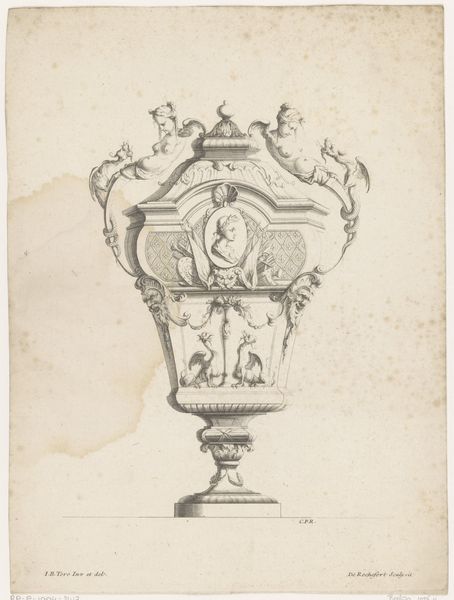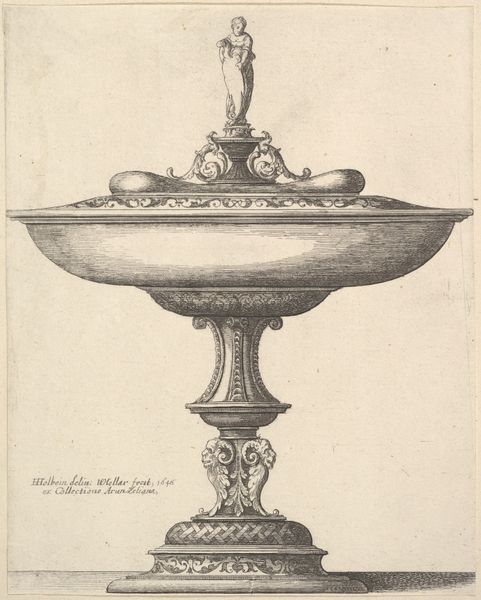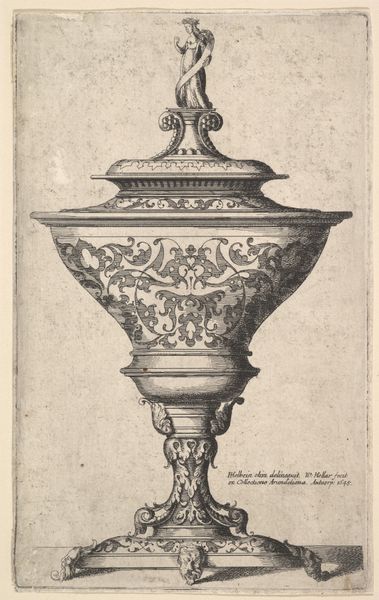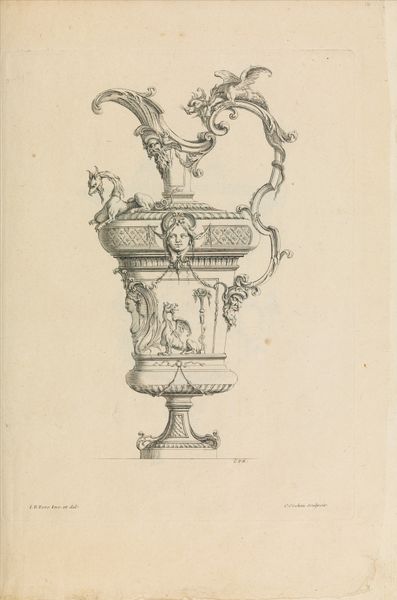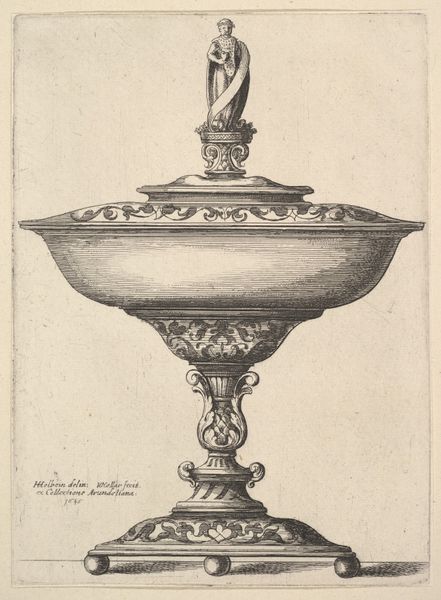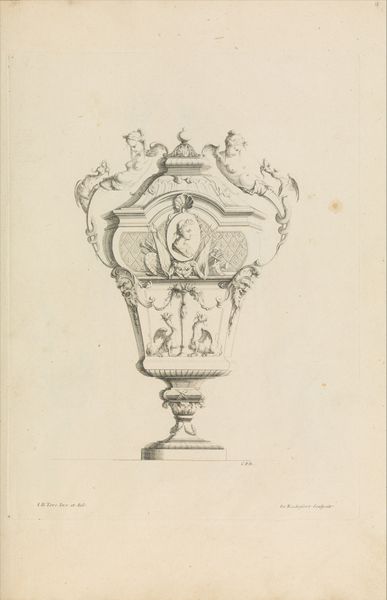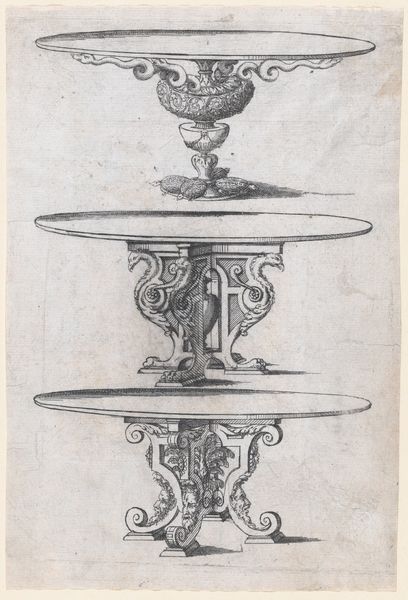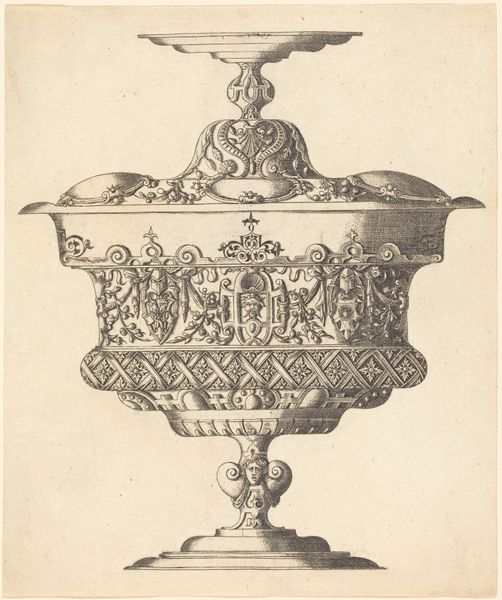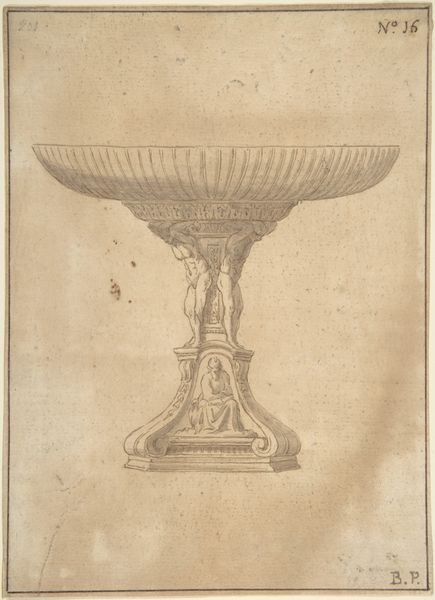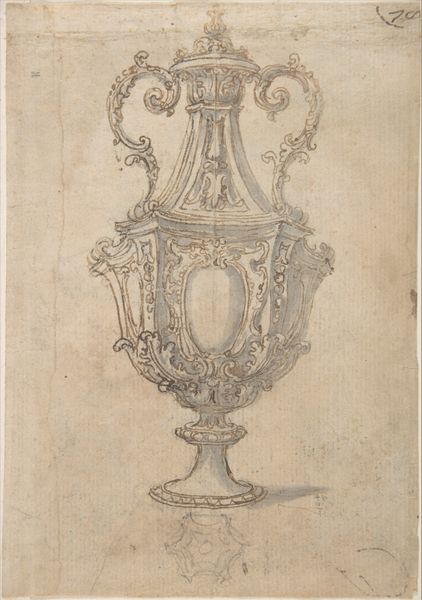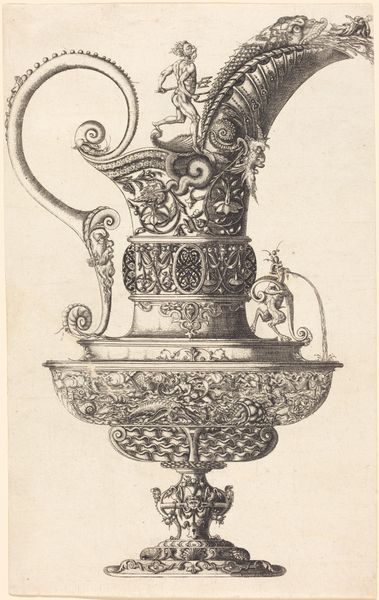
drawing, print, pencil
#
drawing
#
neoclacissism
# print
#
form
#
pencil
Dimensions: 5-1/8 x 6-1/2 in
Copyright: Public Domain
Curator: This is a “Design for a Candelabra,” made sometime between 1800 and 1850 by an anonymous artist. It employs pencil and print media, embodying the Neoclassical aesthetic. What's your initial take? Editor: Stately, but a bit stiff. All those controlled curves and symmetrical adornments feel...unyielding. What do you make of it, symbolically? Curator: It certainly projects authority. Consider the stylized acanthus leaves, recalling classical antiquity and imperial Rome, signalling power and cultural lineage. The symmetry suggests order and rationality, core tenets of the Enlightenment ideals that underpinned Neoclassicism. Editor: Precisely! That controlled symmetry, born of the Enlightenment, upheld hierarchical structures—mirroring societal biases toward male dominance and the subjugation of other identities and epistemologies. Do you read this striving for order as a reflection of societal tensions? Curator: Undeniably. There's often an undercurrent of anxiety within such displays of perfect order. This candelabra design is not just functional; it performs cultural work, reinforcing social hierarchies through its visual language. The visual language of the empire, might I add. Editor: Yes, power codified and subtly disseminated. The artist might not have explicitly intended it, but the design echoes systems of power—illuminating whose stories get told, whose light shines brightest. Curator: The choice of materials, likely intended to mimic metal, is intriguing as well. Metal signifies permanence, luxury—qualities accessible to only a few, cementing its status. The interplay of light and shadow cast by candlelight would animate the design, creating an ambiance of exclusive elegance. Editor: Yet as a *design*, a drawing, its very existence gestures at unrealized potential. Was it ever mass produced, democratized even? The ghostly sepia tones speak to loss and the ephemeral nature of even the grandest designs. It poses uncomfortable questions regarding access to luxury, even in design itself. Curator: It's remarkable how an object designed for illumination can cast light on such complex social dynamics, inviting us to question the power structures embedded within our everyday environment. Editor: Absolutely. Examining pieces like this allows us to not only appreciate the craftsmanship, but also consider how design choices perpetuate particular ideologies – subtly shaping our perceptions and experiences.
Comments
No comments
Be the first to comment and join the conversation on the ultimate creative platform.
